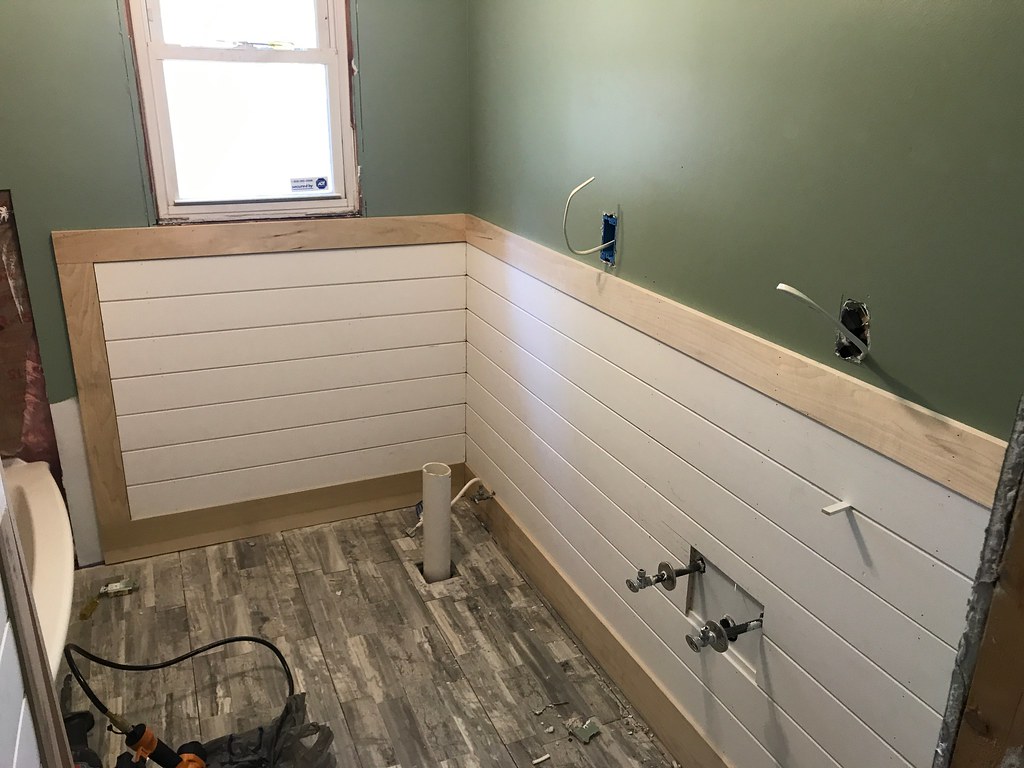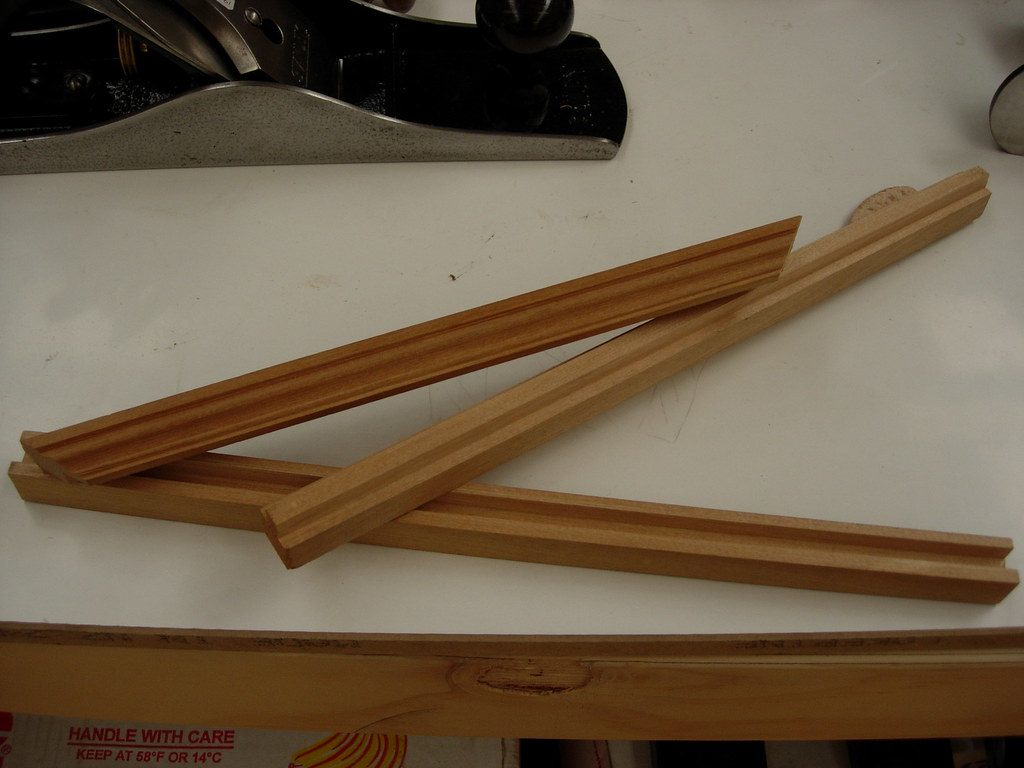Difference Between Shiplap and Tongue and Groove
When it comes to home panelling, not many people get it. Most homeowners barely know the inside and out of the materials used and the installation techniques. There is a tendency where the majority of people refer to wood panelling as shiplap. However, other panelling styles may have been used. For instance, the panelling style used in your home could be anything from board and batten, beadboard, wainscoting or even tongue and groove. Shiplap and tongue & groove are among the most popular panelling styles. While they may look similar once installed, they have differences as outlined below.

What is Shiplap?
Shiplap refers to a type of paneling made from different materials such as metal, wood, engineered wood and even fiber cement to form an L-shape on both ends. This allows the panels to overlap the seams and is also what distinguishes shiplap from other wall cladding types. As such, they are a great option for low humidity and high-heat climates. And since wood shrinks in dry climates, the shrinkage will be less visible. It is also an easier DIY option given the technique of connecting the panels and attaching to the wall. Also, it is cheaper compared to tongue and groove, despite the extra work required to get the rows to lie flat.

What is Tongue and Groove?
This refers to a type of paneling that can be made with different types of materials to form a protrusion, which is the tongue and an indentation, which is the groove. This type of paneling is made to fit like puzzle pieces as opposed to overlapping. Before being nailed to a wall, each plank’s tongue is secured into the groove. Nails are driven through each plank’s tongue at a 45-degree angle. Since tongue & groove panels interlock, they are a great option for cold climates given their insulation capability. If you want to try a DIY option, tongue & groove may not be the best paneling since it requires fitting and securing through the tongue.
Similarities between Shiplap and tongue and groove
- Both are commonly used inside
Differences between Shiplap and tongue and groove
Installation method
Shiplap refers to a type of paneling made from different materials such as metal, wood, engineered wood and even fiber cement to form an L-shape on both ends. On the other hand, tongue & groove refer to a type of paneling that can be made with different types of materials to form a protrusion, referred to as the tongue and an indentation, referred to as the groove where the groove panels interlock.
Cost
Shiplap is cheaper despite the extra work required to get the rows to lie flat. On the other hand, tongue & groove are expensive to install given the complexities involved.
Ease of installation
Shiplap is relatively easy to install and also DIY friendly given the technique of connecting the panels and attaching to the wall. On the other hand, tongue & groove is harder to install and not DIY friendly since it requires fitting and securing through the tongue.
Ideal climates
Shiplap is ideal for low humidity and high-heat climates. On the other hand, tongue & groove is ideal for cold climates given their insulation capability.
Shiplap vs. tongue and groove: Comparison Table

Summary of Shiplap vs. tongue and groove
Shiplap refers to a type of paneling made from different materials such as metal, wood, engineered wood and even fiber cement to form an L-shape on both ends. On the other hand, tongue & groove refer to a type of paneling that can be made with different types of materials to form a protrusion (the tongue) and an indentation (the groove) where the groove panels interlock. The main difference between the two is the installation method. While shiplap panels connect by overlapping, tongue & groove panels panels connect by overlapping.
Is shiplap the same as tongue and groove?
No. Shiplap is not the same as tongue & groove. Shiplap is a type of paneling made from different types of materials with an L-shaped lip on both sides where the panels overlap. On the other hand, tongue & groove refer to a type of paneling that can be made with different types of materials to form an indentation and a protrusion where the groove panels interlock.
What is cheaper: shiplap or tongue and groove?
Shiplap is cheaper despite the extra work required to get the rows to lie flat. On the other hand, tongue & groove is expensive to install given the complexities involved.
Should I use shiplap or tongue and groove?
The choice on whether to use shiplap or tongue & groove should be based on preferences as well as other factors such as your budget and the climate. If you have a limited budget and are located in low humidity and high-heat climates, then use shiplap. However, if you are located in cold climates and do not mind spending more, then opt for tongue & groove.
What is the difference between V-groove and shiplap?
While both represent a beautiful, secure and weather-proof cladding profile, shiplap has a longer curve detail which provides extra water run-off.
Is shiplap out of style?
No. Shiplap is not out of style. It a timeless material that goes well with classic design elements. It is perfect for creating a modern or even contemporary look.
- Difference Between Profit Center and Investment Center - July 2, 2022
- Difference Between Anti-Trust and Anti-Competition - June 6, 2022
- Difference Between Stocktaking and Stock Control - June 6, 2022
Search DifferenceBetween.net :
Leave a Response
References :
[0]Editors of Fine Woodworking. Practical Design Solutions and Strategies: Key Advice for Sound Construction from Fine Woodworking. Taunton Press, 2000. https://books.google.co.ke/books?id=b9ls1lHyCWEC&pg=PA131&dq=Difference+between+Shiplap+and+tongue+and+groove&hl=en&sa=X&ved=2ahUKEwiB4YHP77nxAhWrzIUKHZIXCCMQ6AEwBHoECAYQAg#v=onepage&q=Difference%20between%20Shiplap%20and%20tongue%20and%20groove&f=false
[1]Editors of Fine Woodworking. Designing Furniture. Taunton Press, 2004. https://books.google.co.ke/books?id=HFL9Ej2TCsEC&pg=PA92&dq=Difference+between+Shiplap+and+tongue+and+groove&hl=en&sa=X&ved=2ahUKEwiB4YHP77nxAhWrzIUKHZIXCCMQ6AEwB3oECAgQAg#v=onepage&q=Difference%20between%20Shiplap%20and%20tongue%20and%20groove&f=false
[2]Daniel Benn Atcheson. Roofing Construction & Estimating. Craftsman Book Company, 1995. https://books.google.co.ke/books?id=01qQMoqt7o4C&pg=PA26&dq=Difference+between+Shiplap+and+tongue+and+groove&hl=en&sa=X&ved=2ahUKEwidneLc77nxAhUCLBoKHYoJAw84ChDoATAEegQIAxAC#v=onepage&q=Difference%20between%20Shiplap%20and%20tongue%20and%20groove&f=false
[3]Image credit: https://live.staticflickr.com/146/406556565_5fcd62c23f_b.jpg
[4]Image credit: https://live.staticflickr.com/4406/36540892063_54f27662bf_b.jpg
